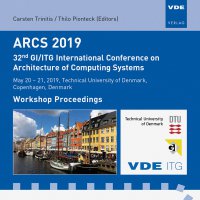Parallel Chemical Reaction Optimisation for the Utilisation in Intelligent RNA Prediction Systems
Konferenz: ARCS Workshop 2019 - 32nd International Conference on Architecture of Computing Systems
20.05.2019 - 21.05.2019 in Copenhagen, Denmark
Tagungsband: ARCS Workshop 2019
Seiten: 8Sprache: EnglischTyp: PDF
Persönliche VDE-Mitglieder erhalten auf diesen Artikel 10% Rabatt
Autoren:
Stegherr, Helena; Stein, Anthony; Haehner, Joerg (Organic Computing Group, University of Augsburg, Germany)
Inhalt:
Traditional, strictly deterministic algorithms are reaching their limits as modern information systems are often challenged with tremendously complex optimisation tasks. This can be in terms of reasonable computational effort or due to the lack of gradient information. Therefore, a necessity of designing Intelligent Systems becomes apparent and the increasing appearance of such systems substantiates the currently observable advent of Artificial Intelligence. Thus, Computational Intelligence methods, such as metaheuristics, gain entry into modern systems in order to render the challenging problems tractable again, sometimes with the downside of only converging to approximately optimal solutions. An approach inspired by chemical reactions which attracted rather less research attention so far, especially with regard to the utilisation in Organic Computing research, has been proposed recently. In this working paper, the Chemical Reaction Optimisation (CRO) algorithm is transformed towards a parallel variant, called pACRO, in order to decrease convergence time and scalability by exploiting multicore computing architectures. The proposed parallel algorithm is empirically validated on well-known benchmark functions and set in relation to the findings reported in the literature. First results indicate that pACRO can compete with its predecessors. Furthermore, initial steps towards an application in the highly complex task of RNA Secondary Structure Prediction (RNA-SSP) are taken by outlining novel ways to construct the search space for helices as well as a solution candidate encoding based on which pACRO can be utilised.


